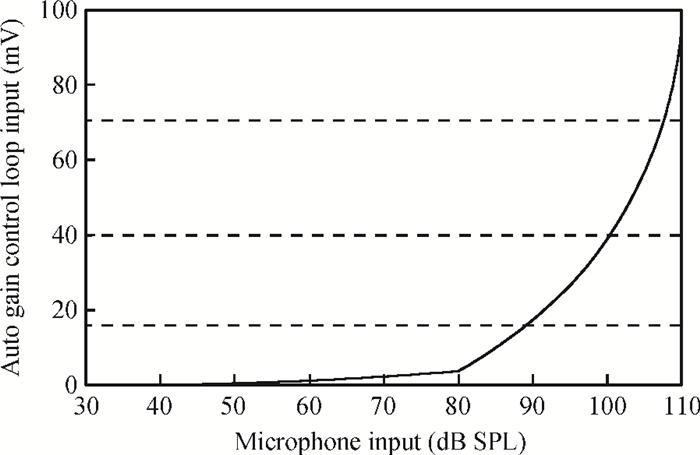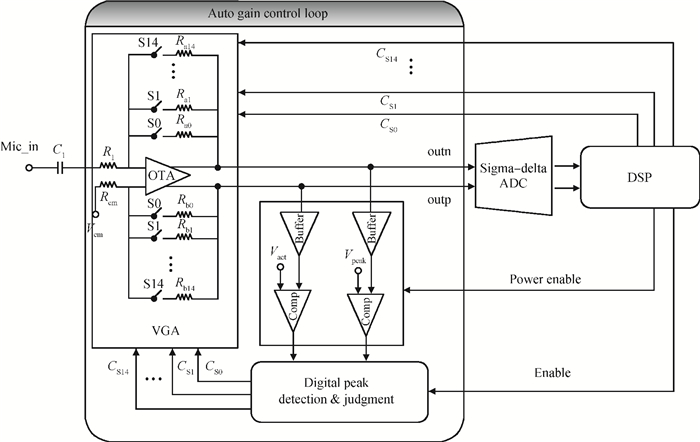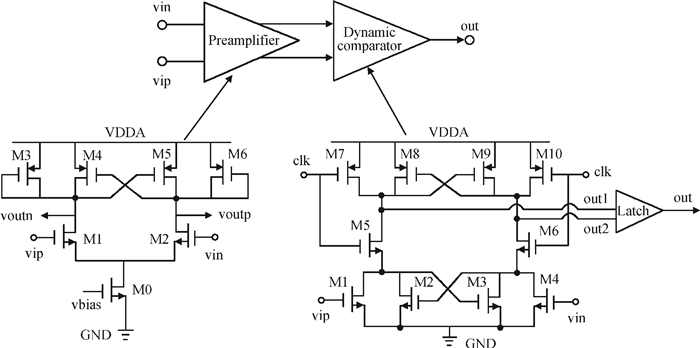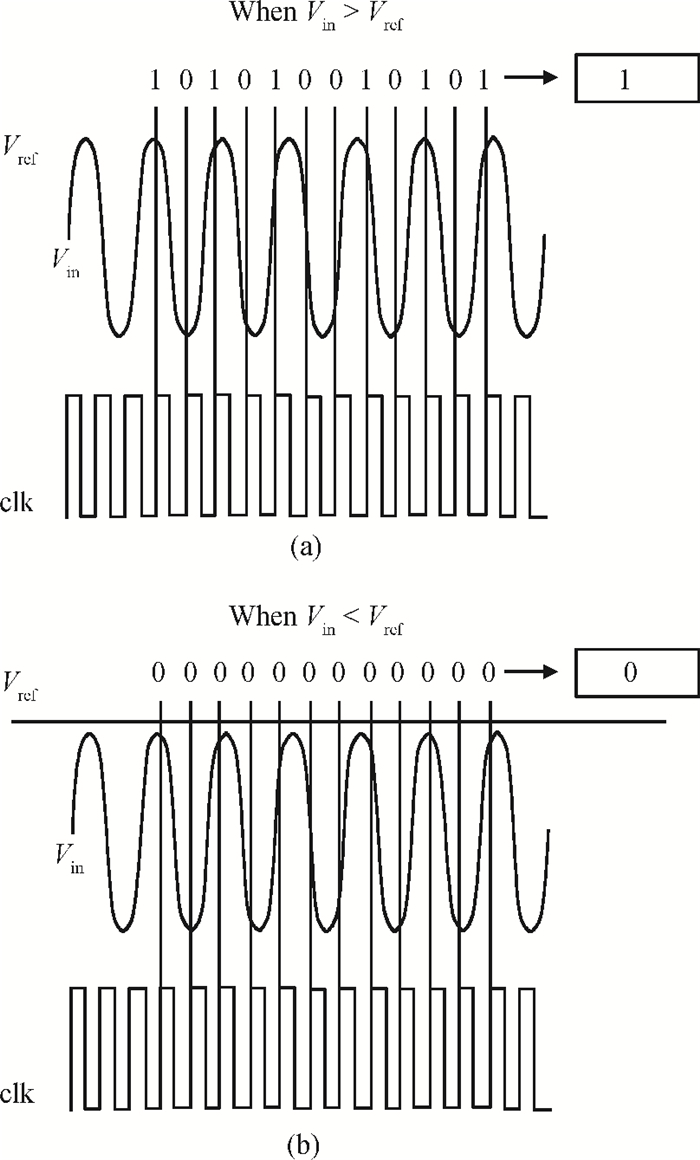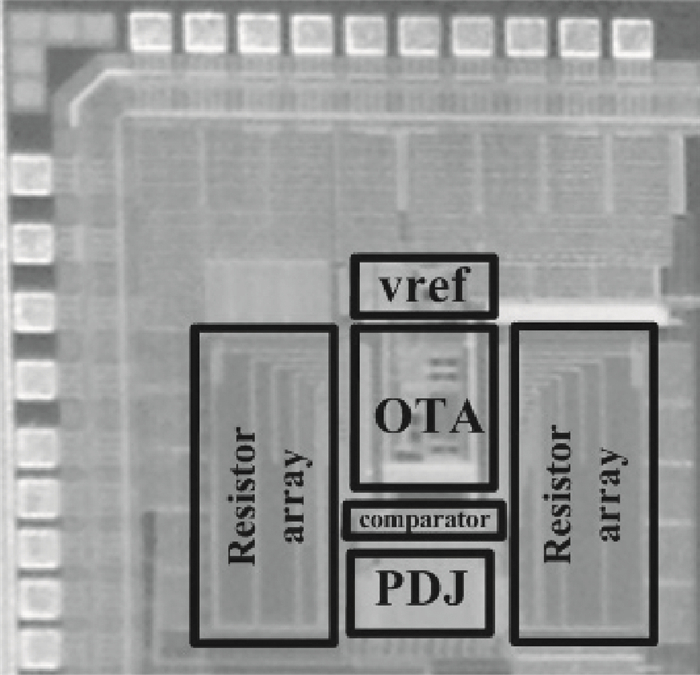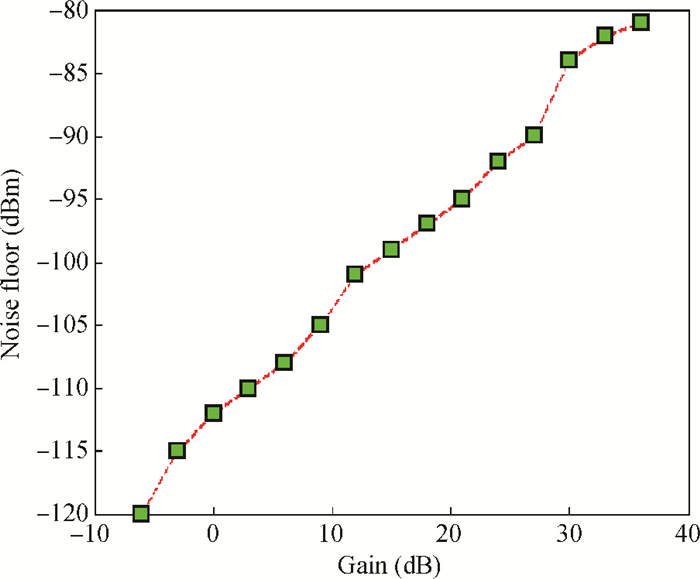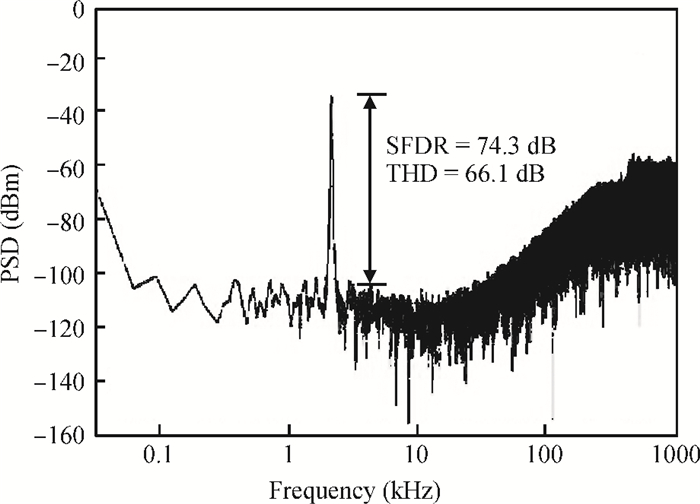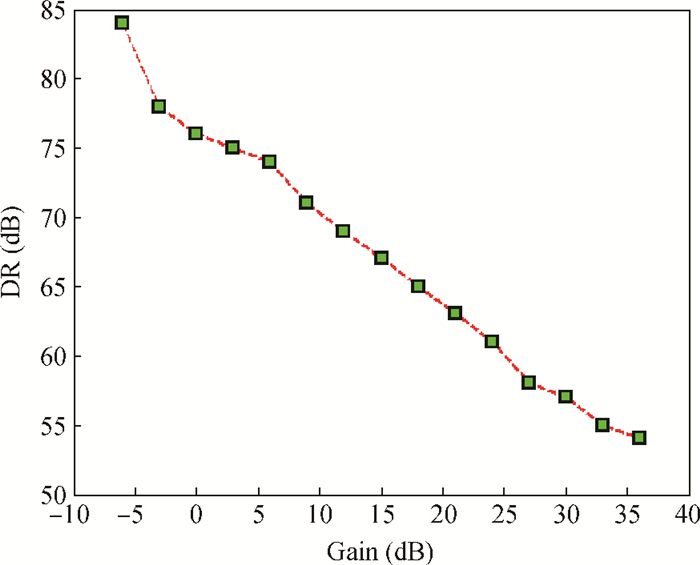| Citation: |
Chengying Chen, Hainan Liu, Yong Hei, Jun Fan, Xiaoyu Hu. A low-power high-performance configurable auto-gain control loop for a digital hearing aid SoC[J]. Journal of Semiconductors, 2013, 34(10): 105011. doi: 10.1088/1674-4926/34/10/105011
****
C Y Chen, H N Liu, Y Hei, J Fan, X Y Hu. A low-power high-performance configurable auto-gain control loop for a digital hearing aid SoC[J]. J. Semicond., 2013, 34(10): 105011. doi: 10.1088/1674-4926/34/10/105011.
|
A low-power high-performance configurable auto-gain control loop for a digital hearing aid SoC
DOI: 10.1088/1674-4926/34/10/105011
More Information
-
Abstract
A low-power, configurable auto-gain control loop for a digital hearing aid system on a chip (SoC) is presented. By adopting a mixed-signal feedback control structure and peak detection and judgment, it can work in automatic gain or variable gain control modes through a digital signal processing unit. A noise-reduction and dynamic range (DR) improvement technique is also used to ensure the DR of the circuit in a low-voltage supply. The circuit is implemented in an SMIC 0.13 μm 1P8M CMOS process. The measurement results show that in a 1 V power supply, 1.6 kHz input frequency and 200 mVp-p, the SFDR is 74.3 dB, the THD is 66.1 dB, and the total power is 89 μ W, meeting the application requirements of hearing aid SoCs.-
Keywords:
- hearing aid device,
- low power,
- gain control,
- digital feedback
-
References
[1] Kim S, Lee J Y, Song S J, et al. An energy-efficient analog front-end circuit for a sub-1 V digital hearing aid. IEEE J Solid-State Circuits, 2006, 41(4):876 doi: 10.1109/JSSC.2006.870798[2] Kim S, Lee J Y, Nam J C, et al. A full integrated digital hearing aid chip with human factor considerations. IEEE J Solid-State Circuit, 2008, 43(1):266 doi: 10.1109/JSSC.2007.914721[3] Silva M J, Solis B S, Schellenberg M. A CMOS hearing aid device. Analog Integrated Circuit and Signal Processing, 1999, 21(2):163 doi: 10.1023/A:1008373824380[4] Baker M W, Sarpeshkar R. Low-power single-loop and dual-loop AGCs for bionic ears. IEEE J Solid-State Circuits, 2006, 41(9):1983 doi: 10.1109/JSSC.2006.880599[5] Serra G F, Huertas J L. Low voltage CMOS sub threshold log amplification and AGC. IEEE Proc Circuit Devices System, 2005, 52(1):61[6] Azzolini C. A 1-V CMOS audio amplifier for low cost hearing aids. Proc 15th, IEEE international Conference on Electronics, Circuit and Systems, 2008 http://ieeexplore.ieee.org/document/4674915/[7] Li Fanyang, Yang Haigang, Liu Fei, et al. A current mode feed-forward gain control system for a 0.8 V CMOS hearing aid. Journal of Semiconductors, 2011, 32(6):065010 doi: 10.1088/1674-4926/32/6/065010[8] Hauptmann J, Dielacher F, Steiner R, et al. A low-noise amplifier with automatic gain control and anticlippingcontrol in CMOS technology. IEEE J Solid-State Circuits, 1992, 27(7):974 doi: 10.1109/4.142591[9] Neuteboom H, Kup B, Hanssens M. A DSP-based hearing instrument I. IEEE J Solid-State Circuits, 1997, 32(11):1790 doi: 10.1109/4.641702[10] Sarpeskar R, Baker M, Salthouse C, et al. An analog bionic ear processor with zero-crossing detection. Proc ISSCC, San Francisco, CA, 2005, 42:78 http://ieeexplore.ieee.org/document/1493877/?arnumber=1493877&filter%3DAND(p_IS_Number:32118)[11] Gao D M. Research on the automatic gain control amplifier with adaptive universal control. PhD Dissertation, Beijing, IMECAS, 2006 -
Proportional views





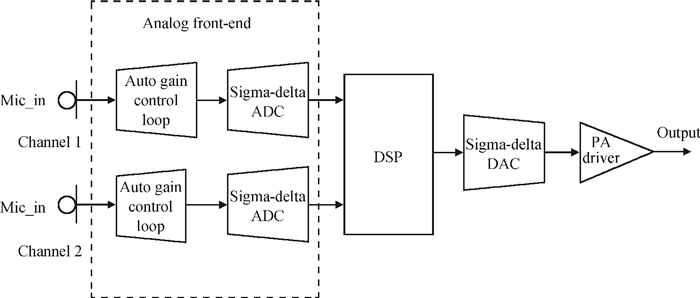
 DownLoad:
DownLoad:
